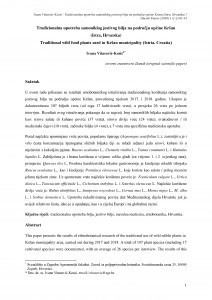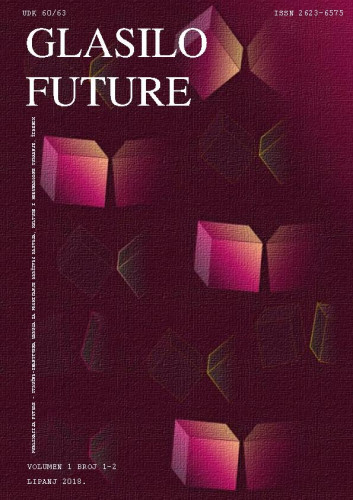U ovom radu prikazani su rezultati etnobotaničkog istraživanja tradicionalnog korištenja samoniklog jestivog bilja na području općine Kršan, provedenog tijekom 2017. i 2018. godine. Ukupno je dokumentirano 107 biljnih vrsta (od toga 17 kultiviranih vrsta), u prosjeku 26 vrsta po jednom intervjuu. Rezultati ovog istraživanja pokazuju da se najveći broj samoniklih biljaka najčešće koristi kao: sirove salate ili kuhano povrće (37 vrsta), sirovo divlje voće (24 vrste), svakodnevni / ili medicinski čajevi (18 vrsti), začinske biljke (4 vrste), a 7 vrsta ima specifičnu medicinsku uporabu. Pored najčešće spominjane vrste povrća, popularne šparoge (Asparagus acutifolius L.), zanimljiva je i vrlo česta konzumacija šparogama sličnih biljaka čiji se mladi izdanci jedu sirovi, kuhani ili u mješavini s kokošjim jajima: Ruscus aculeatus L., Clematis vitalba L., Tamus communis L. i Humulus lupulus L. Zabilježena je i hrana korištena u vrijeme velike gladi (za vrijeme 1. i 2. svjetskog rata), primjerice Quercus ilex L. Posebna karakteristika lokalne gastronomije je kiseljenje mladih izbojaka Ruscus aculeatus L., kao i kiseljenje Portulaca oleraceae L. koje koriste kao salatu / prilog mesnim jelima tijekom zime. Uz spomenute vrste najčešće korišteno povrće je: Foeniculum vulgare L., Urtica dioica L., Taraxacum officinale L., Cichorium inthybus L. i Sonchus oleraceus L. Najčešće korišteno divlje voće je: Rubus ulmifolius L., Juniperus oxycedrus L., Cornus mas L., Morus nigra L., M. alba L. i Sorbus domestica L. Upotreba nekultiviranog povrća duž Mediteranskog dijela Hrvatske još je uvijek relativno česta, iako je u opadanju, kao i u cijeloj Europi i na globalnoj razini.; This paper presents the results of ethnobotanical research of the traditional use of wild edible plants in Kršan municipality area, carried out during 2017 and 2018. A total of 107 plant species (including 17 cultivated species) were documented, with an average of 26 species per interview. The results of this study show that the largest number of wild edible plants is most often used as: raw or cooked vegetables (37 species), raw wild fruits (24 species), daily / or medical teas (18 species), spices (4 species), and 7 species with specific medical use. In addition to the most commonly mentioned vegetable species, Asparagus acutifolius L., is also very common consumption of asparagus-like plants whose young shoots are eaten raw, cooked or in a mixture of chicken eggs: Ruscus aculeatus L., Clematis vitalba L., Tamus communis L. and Humulus lupulus L. Foods used during the Great Hunger (during 1st and 2nd World War), such as Quercus ilex L., have been noted. A special feature of local gastronomy is the sourening of young shoots Ruscus aculeatus L., as well as the acidification of Portulaca oleraceae L. used as salad / apple meat dishes during the winter. In addition to these species, the most commonly used vegetables are: Foeniculum vulgare L., Urtica dioica L., Taraxacum officinale L., Cichorium inthybus L. and Sonchus oleraceus L. The most commonly used wild fruits are: Rubus ulmifolius L., Juniperus oxycedrus L., Cornus mas L., Morus nigra L., M. alba L. and Sorbus domestica L. The use of uncultivated vegetables along the Mediterranean part of Croatia is still relatively frequent, although it is declining, as well as throughout Europe and globally.
Sažetak

 Glasilo Future : stručno-znanstveni časopis 1,1-2(2018) / glavni i odgovorni urednik Boris Dorbić.
Glasilo Future : stručno-znanstveni časopis 1,1-2(2018) / glavni i odgovorni urednik Boris Dorbić.